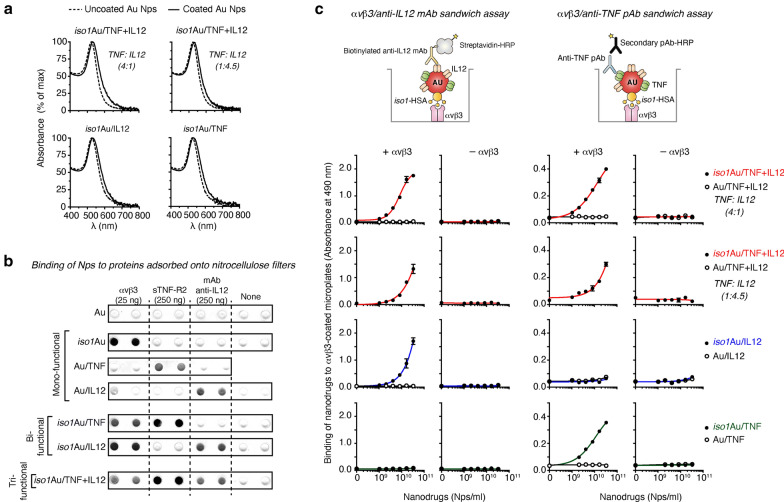Fig. 1.
Characterization of tri- and bifunctional nanodrugs by UV–Vis spectrophotometry and binding assays to αvβ3, sTNF-R2 and anti-IL12 antibodies. a UV–Vis absorption spectra of nanodrugs. The dotted line and solid line correspond to uncoated or coated 25-nm gold nanoparticles, respectively. The TNF:IL12 molar ratio used to prepare the trifunctional nanodrugs is indicated in parentheses. b Binding of different nanodrugs (iso1Au, Au/TNF, Au/IL12, iso1Au/IL12, iso1Au/TNF, and iso1Au/TNF + IL12) to αvβ3, soluble TNF receptor Type-II (sTNF-R2, Enbrel), and anti-IL12 antibody (mAb C15.6) adsorbed onto nitrocellulose filters, as detected by silver staining of gold nanoparticles. The iso1Au/TNF + IL12 used in this experiment was prepared using a TNF:IL12 molar ratio of 4:1. c Binding of nanodrugs to microtiter plates coated with or without αvβ3, as detected using a biotinylated antibody anti-IL12 (mAb C17.8) or with anti-TNF antibodies followed by HRP-labeled streptavidin or HRP-labeled secondary antibodies, respectively. Schematic representation of the assays (upper panels). The results of a representative experiment are shown (mean ± SE of duplicates). The TNF:IL12 molar ratio used to prepare the nanodrugs is indicated in parentheses

